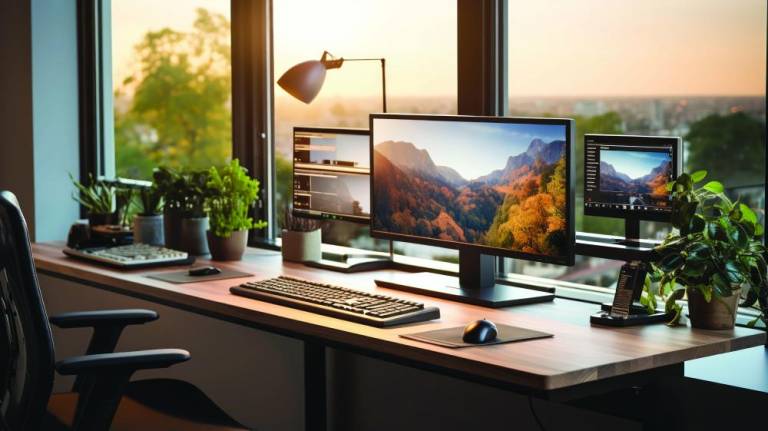While this offers newfound freedom and convenience, it comes with its own set of challenges. Creating a comfortable and ergonomic workspace at home is crucial for preventing strain, injuries and maintaining overall well-being.
Ergonomics is the science of designing and arranging our environment to fit the way we work and interact with it. In the context of a home office, it means setting up your workspace to support your body’s natural movements and reduce the risk of discomfort or injury.
Common Issues
The Texas Department of Insurance reported that during the pandemic’s shift to more people working from home, there was a surge in injuries. People had left their ergonomically designed work spaces and were now working on kitchen counters, coffee tables or their beds. This led to people slouching, sitting too long, extending the wrists and relying on laptop screens.
Too much sitting at poorly designed work stations led to neck and shoulder pain, back pain, wrist and hand discomfort, eye strain, fatigue, tight hips, leg cramps and reduced productivity.
Arrangements
Invest in an ergonomic chair that provides adequate lumbar support and allows for adjustments in height, arm rests and backrest angle. Your feet should rest flat on the floor or on a footrest. If it isn’t possible to have your feet on the ground, use a footrest, books, boards or other material to relieve the pressure on your thighs and prevent leg cramps.
When sitting in the chair, don’t lean forward to type. Sit in a relaxed, slightly reclined position. This will decrease muscle strain and pressure on the discs in your spine.
Set your desk at a height that allows your elbows to stay close to your body at a 90-degree angle while typing. Use a keyboard tray if necessary to achieve this position.
Place your monitor at eye level, with the top of the screen aligned with your eye line when you are looking straight ahead. Use a monitor stand or adjust the height of your monitor accordingly.
Ensure your workspace is well-lit to reduce eye strain. Use natural light whenever possible, but use task lighting as needed. An ergonomic keyboard and mouse allows for a relaxed, neutral wrist position. Avoid resting your wrists on a hard surface while typing.
Keep cable organized and out of the way to prevent tripping hazards.
Take regular breaks to stand, stretch and walk around. Set a timer or use productivity apps to remind you to step away from your desk. Even while sitting, occasionally stretch your hands, fingers and arms. To avoid eye strain, look away from the computer every 10 to 15 minutes and focus on a spot 30 feet away for 30 seconds.
